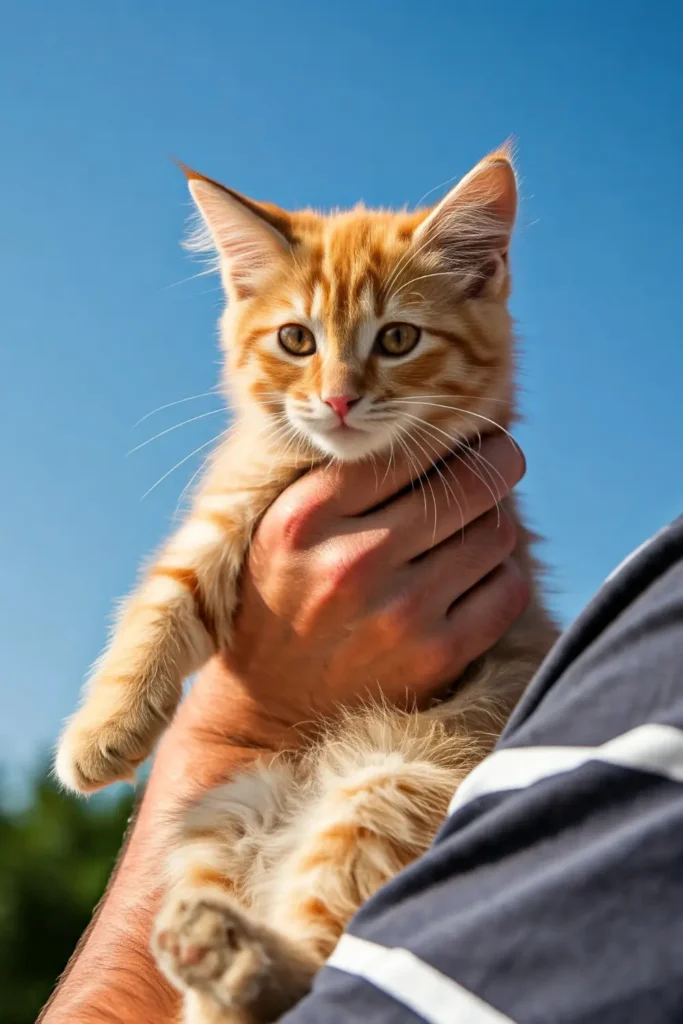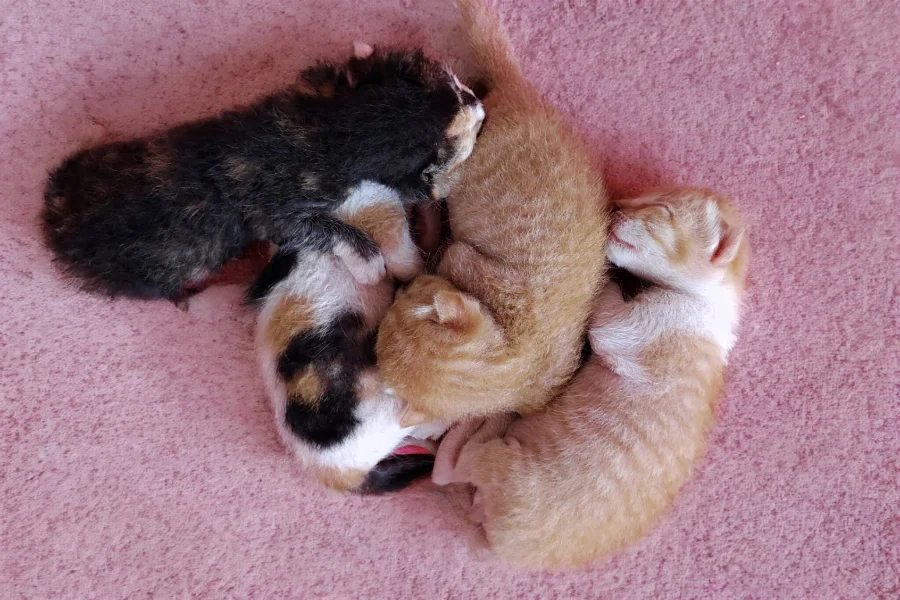Socializing your kitten during their early weeks is crucial for developing a well-adjusted, confident adult cat. A properly socialized kitten not only forms stronger bonds with their human family but also handles new experiences with ease, leading to a happier, less anxious pet.
In this guide, we’ll walk you through practical steps, optimal timing windows, and proven techniques to help your furry friend become a social butterfly, covering everything from handling exercises to introduction strategies.
Understanding Kitten Socialization: Why It Matters
Kitten socialization is the crucial process of exposing young cats to various experiences, environments, people, and other animals during their developmental stages. This process helps kittens develop into well-adjusted, confident adult cats who can easily handle different situations.
Through proper socialization, kittens learn essential life skills, including appropriate play behavior, communication with humans and other pets, and how to respond to stimuli in their environment. These early positive experiences contribute to reduced anxiety and fear-based behaviors later in life.
The period between 2 -7 weeks of age represents a critical window for kitten socialization, as this is when they are most receptive to new experiences. Kittens who miss this crucial socialization period may develop behavioral issues, including fear of humans, aggression, or difficulty adapting to new situations. This is why many veterinarians and animal behaviorists emphasize the importance of early socialization, particularly for kittens who will become household pets.
When to Start Socializing Your Kitten
The Socializing Ideal Time
The ideal time to start socializing your kitten is between 2 to 7 weeks of age, known as the critical socialization period. During this window, kittens are most receptive to new experiences and are naturally curious about their environment.
This period is crucial for developing positive associations with humans, other pets, and various stimuli they’ll encounter throughout their lives.
Never Too Late to Socialize Them
While early socialization is most effective, older kittens and even adult cats can still be successfully socialized – it just requires more patience and consistency. Early socialization works better because young kittens haven’t developed fear responses or negative associations yet.
However, with gentle, persistent exposure and positive reinforcement, cats of any age can learn to become more social and confident.
Watch For Behavior Signs
Look out for signals that show your kitten is prepared for social interactions: maintaining an upright tail position, approaching people with curiosity, displaying playful behavior, and showing interest in their surroundings.
If your kitten isn’t hiding, hissing, or showing signs of fear, they’re likely ready to explore social situations. Start slowly and always let your kitten set the pace for interactions.
Best Practices for Socializing Your Kitten
Create a Safe Space
Creating a safe environment is crucial for your kitten’s development. Set up a dedicated room with cozy hiding spots, scratch posts, and elevated resting areas. Remove dangerous items like toxic plants, loose wires, and small objects they might swallow. Keep the litter box and food station in separate, quiet areas.
Handling Techniques

When handling your kitten, start with gentle approaches. Let them come to you first, then offer your hand for sniffing. Support their entire body when lifting them, keeping one hand under their chest and another under their hindquarters. Keep initial handling sessions brief and always respect their boundaries.
Playtime and Interaction
Playtime is essential for building confidence and trust. Use wand toys, balls, and interactive puzzles to engage your kitten daily. Schedule multiple short play sessions throughout the day rather than one long session. This helps prevent overstimulation and maintains their interest while strengthening your bond.
Using Positive Reinforcement
Positive reinforcement creates lasting behavioral patterns. Reward desired behaviors immediately with treats, gentle praise, or favorite toys. Never punish or scold your kitten, as this can damage trust. Keep treats small and varied, and always pair them with affectionate words and gentle petting.
Introducing Your Kitten to Other Pets, New People & Place
Preparing Your Home and Pets
Before bringing your new kitten home, create a dedicated safe space for your furry friend. Prepare a safe space with essentials like food, water, a litter box, and hiding spots.
Gradually introduce your existing pets to the kitten’s scent by exchanging bedding or toys. Keep the kitten in a separate room initially, allowing your other pets to adjust to the new presence through scent and sound. This helps reduce territorial behavior and stress for all animals involved.
Safe Introduction Techniques
Start introductions through a closed door, letting animals smell and hear each other. After a few days, use a baby gate or cracked door for visual contact.
Keep supervising short face-to-face meetings. Keeping your dogs leashed and providing escape routes for the kitten. With smaller pets like rabbits or hamsters, ensure they’re safely contained while the kitten observes from a distance. Always reward positive interactions with treats.
Meeting New People
Create positive associations by having visitors offer treats to your kitten. Teach children proper handling techniques and supervise all interactions.
Don’t force contact; let the kitten approach people on their terms. Keep initial meetings brief and quiet, and gradually increase the duration as your kitten becomes more confident. Watch for signs of stress like hiding, hissing, or tail puffing.
Outdoor Adventures and Safety
Consider indoor-only living for optimal safety, as outdoor cats face risks from traffic, predators, and diseases. If you choose supervised outdoor time, start with a secure carrier or harness in a quiet area.
Wait until vaccinations are complete and consider microchipping. Watch for signs of overwhelm and limit initial outdoor sessions to 5-10 minutes. Never leave your kitten unsupervised outside.
The Role of Veterinary Visits in Socialization
Regular veterinary visits play a crucial role in kitten socialization beyond just health maintenance. These check-ups expose your kitten to new environments, sounds, and handling by different people.
When combined with positive experiences, these visits help build a foundation of trust and confidence that extends into other social situations.
To make vet visits more pleasant, start with short “happy visits” where your kitten just receives treats and pets. Use a comfortable carrier, bring their favorite toys, and remain calm yourself.
Early positive healthcare experiences teach kittens that handling by strangers can be safe and rewarding, fostering better socialization throughout their lives.
Also, learn how to care for cats from birth to one year
Common Socialization Challenges and How to Overcome Them
Fear and Timidity
Fear and timidity in kittens can manifest through hiding, avoiding contact, or freezing when approached. Create a safe space by providing hiding spots while gradually encouraging exploration.
Speak softly and use treats to create positive associations. Never force interaction; instead, let the kitten set the pace. Consistent, gentle exposure to new experiences will help build their confidence over time.
Aggression
Watch for signs of aggression such as hissing, swatting, or biting during play. These behaviors might indicate fear, overstimulation, or improper socialization.
Redirect aggressive play with appropriate toys and never use physical punishment. Early intervention is crucial – establish clear boundaries and consistently reward calm behavior. If aggression persists, consult with a veterinarian to rule out medical issues.
Slow Progress
Some kittens may take weeks or even months to fully adjust to their new environment. This is perfectly normal and depends on factors like their early experiences and individual personality.
Maintain a consistent routine and celebrate small victories. Remember that each kitten progresses at their own pace, and rushing the process can lead to setbacks.
Separation Anxiety
This could happen when kittens become overly dependent on human companionship. Prevent this by gradually introducing alone time and maintaining a predictable schedule.
Create an enriching environment with toys, scratching posts, and window perches. Consider getting a second kitten as a companion, and avoid making departures and arrivals too emotional or dramatic.
Socialization Timetable: Week-by-Week Guide
2-4 Weeks
During the 2-4 week stage, focus on the crucial early development of your kitten. This period is vital for sensory development and socialization. Engage with your kitten by handling them daily to foster trust.
Introduce gentle sounds, like a ticking clock, to build their auditory senses. Aim to have them interact briefly with siblings or other well-behaved pets, as this establishes important behavioral foundations and encourages playful exploration.
4-6 Weeks
From 4-6 weeks, your kitten’s personality will begin to shine. Continue to socialize by exposing them to various people and experiences, such as different textures and toys.
Start incorporating supervised playtime with humans and other pets, ensuring a positive environment. This is also an excellent time to introduce litter box training, helping them understand sanitation.
Aim for short, frequent interactions, allowing your kitten’s confidence to grow as they navigate their surroundings.
6-12 Weeks
Between 6-12 weeks, your kitten becomes more curious and playful, making this a critical time for their social development. Focus on introducing them to new environments, like different rooms in your home, while ensuring they feel safe.
Incorporate playtime with varied toys to teach hunting skills and promote bonding. By the end of this stage, aim for your kitten to be comfortable around multiple people, sounds, and experiences, setting a solid foundation for a well-adjusted adult cat.



